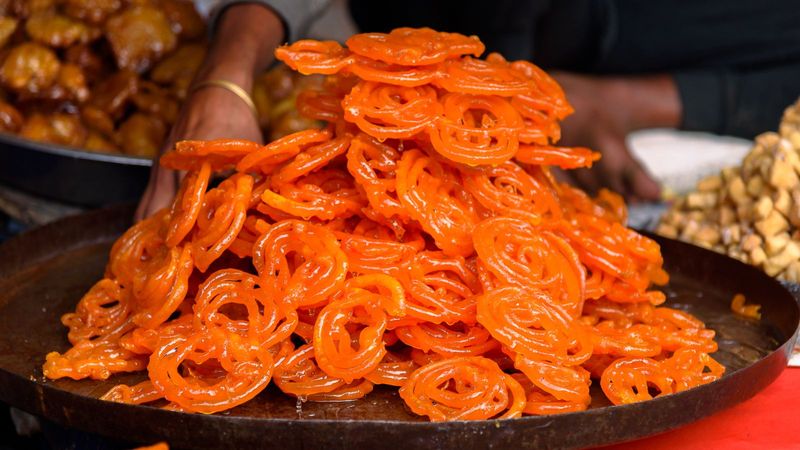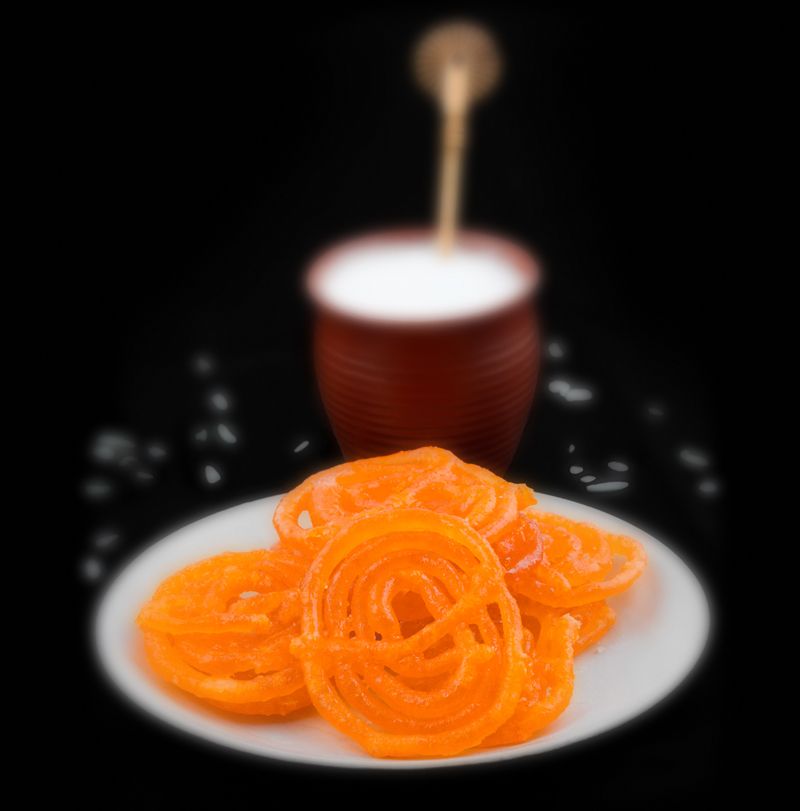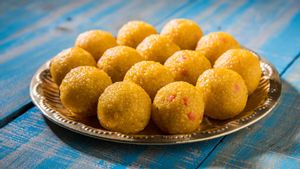Jalebi, jhangari, jilapir, zelapi – regardless of what you call it, we can safely say, this deep-fried sweet dish is one of India’s top favourite sweet dishes. However, not many know that this fried goodness – which is commonly made using all-purpose flour, yoghurt, ghee, saffron, and cardamom; and soaked in sugar syrup – is not actually of Indian origin.

Yes, you read that right. The ‘shaan’ (pride) of most sweetmeat shops of our country, the humble jalebi originated in West Asia as ‘zalabiya’. Indian cuisine was introduced to zalabiya during the medieval period when Turkish and Persian traders brought the zalabiya to the subcontinent. Little did the people of then know that one day, jalebi will become an inseparable part of our festivals and celebrations.
A prominent feature at sweet shops, here are five different ways jalebi is commonly enjoyed across the country.
1. Jalebi and Rabdi

Hot and crispy jalebis with a generous portion of creamy rabdi is what dreams are made of! Okay, pardon our exaggeration, but when it comes to this sinful sweet dish, all of us tend to go a bit overboard talking about it.
Parts of North India can be credited for the jalebi-rabdi combination. North Indians prefer eating their jalebis dunked in warm or chilled rabdi. Did you know? This combo is Bollywood actress Shilpa Shetty’s favourite Indian sweet dish.
2. Jalebi with Milk

If you’re a calorie-conscious person, you need some major courage to give this treat a shot. Popularly known as doodh jalebi, it is basically jalebis dunked in a glass full of milk. This classic combination is finished off with a thick wedge of fresh cream or malai.
People in parts of Uttar Pradesh, including Haridwar, like to start their mornings with doodh jalebi. Many say, it energises the body and lays the foundation for a happy day.
3. Jalebi and Fafda

Fafda is a popular Gujarati snack made using gram flour, turmeric, and carom seeds. It is fried crisp and served with chutney or raw papaya salad (popularly known as sambhara). Apart from being eaten with chutney or salad, fafdas are also served with jalebis.
The sweetness of the jalebis and the salty-spicy flavours of these Indian-style crisps make for an interesting combination – a flavour bomb, to say the least. Fafda-jalebi makes for Gujarat’s favourite breakfast dishes but can also be eaten as a snack throughout the day.
4. Jalebi and Indori Poha

Jalebis are available across the country but the combination of poha and jalebi is something that’s unique to Indore, Madhya Pradesh. Indori poha-jalebi is one of the most famous breakfast dishes in this city.
Now, you may say, poha is available in several parts of the country so what’s so special about the Indore version? The Indori folks garnish their poha with a generous portion of Ratlami sev, salted boondi (fried gram flour pearls), chopped onions and pomegranate. One of the best places to eat this poha is at the Sarafa Bazaar in Indore which is popular nationwide for its fun and innovative street food.
5. Jalebi and Curd
Dahi jalebi is another popular breakfast combination from different cities of Uttar Pradesh. Besides UP, it is also loved in Bihar, Punjab and Haryana. It may sound like a weird combination at first, but when you try it, dahi jalebi is surely going to woo your taste buds.
In this combination, jalebi is dunked in a generous portion of sweetened whisked curd. For people who don’t like their desserts too sweet, we’d suggest you don’t add any sugar to the curd.




